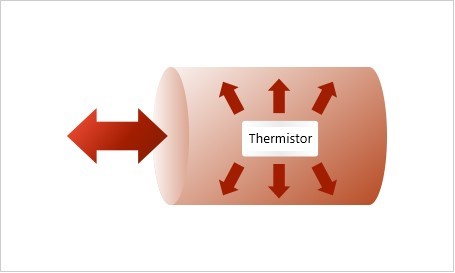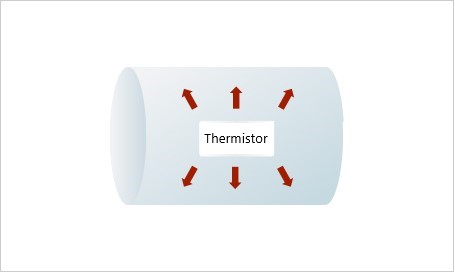When current is applied to a thermistor, the thermistor itself also generates heat (called self-heating).
When measuring temperatures, since self-heating makes it impossible to accurately measure the temperature of the measured object, a very small current is applied to the device so that the effect of self-heating is negligible.
When measuring physical quantities other than temperature, conversely, the thermistor is intentionally made to self-heat and the difference in the way this heat escapes is used for detection.
-

-

When the physical quantity to be measured changes around the detection thermistor sensor, the way heat escapes changes. In this case, a temperature difference arises between the self-heated compensating and detection thermistors, and the physical quantity can be determined from the difference in the two resistance values.
For example, when the same thermistor is placed in a dry air and a humid air room, the humid air has greater heat transfer (thermal conductivity), so it removes more heat from the thermistor than the dry air, resulting in a lower thermistor temperature (higher resistance value). The difference in this change gives us the humidity (a physical quantity other than temperature).



